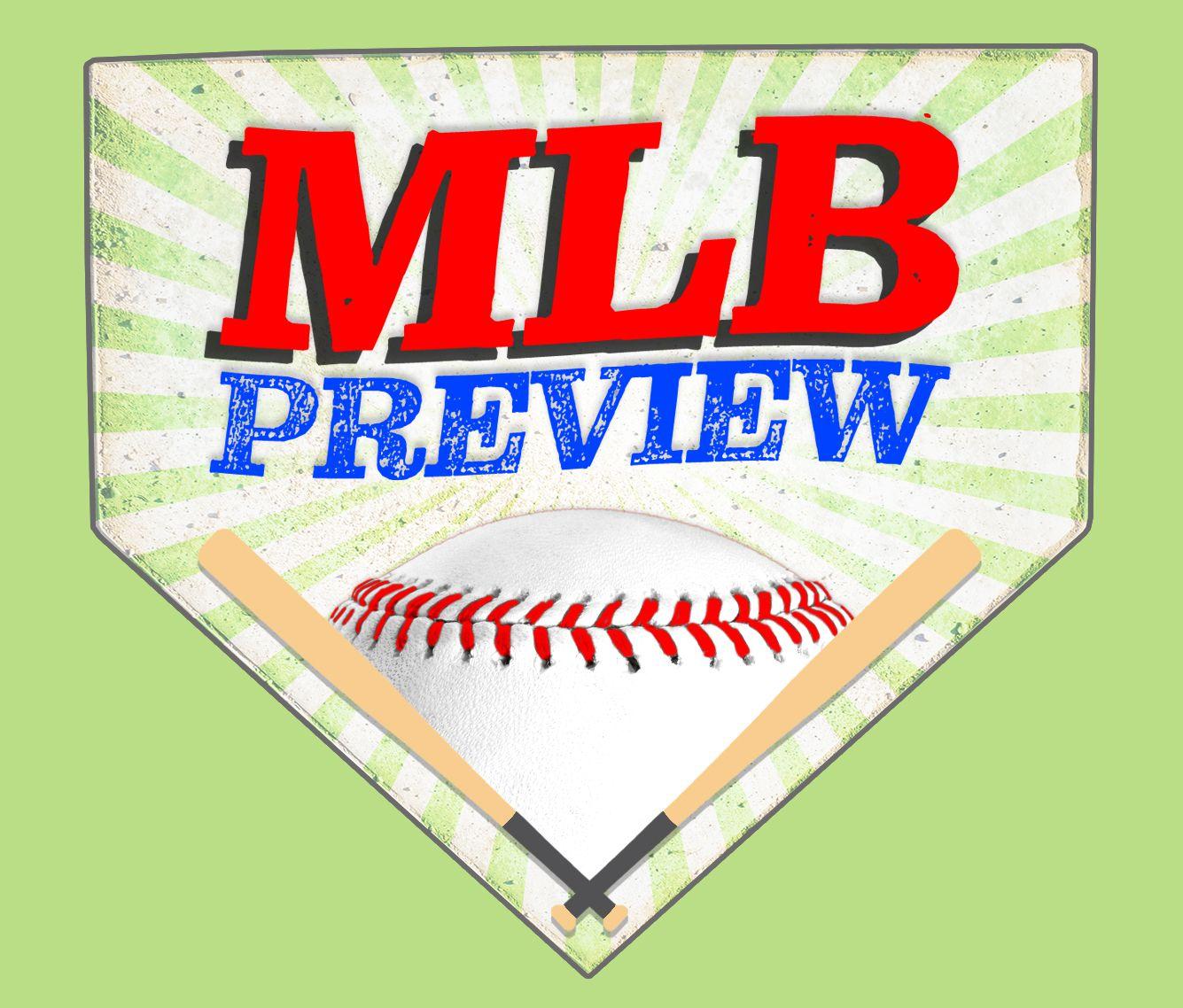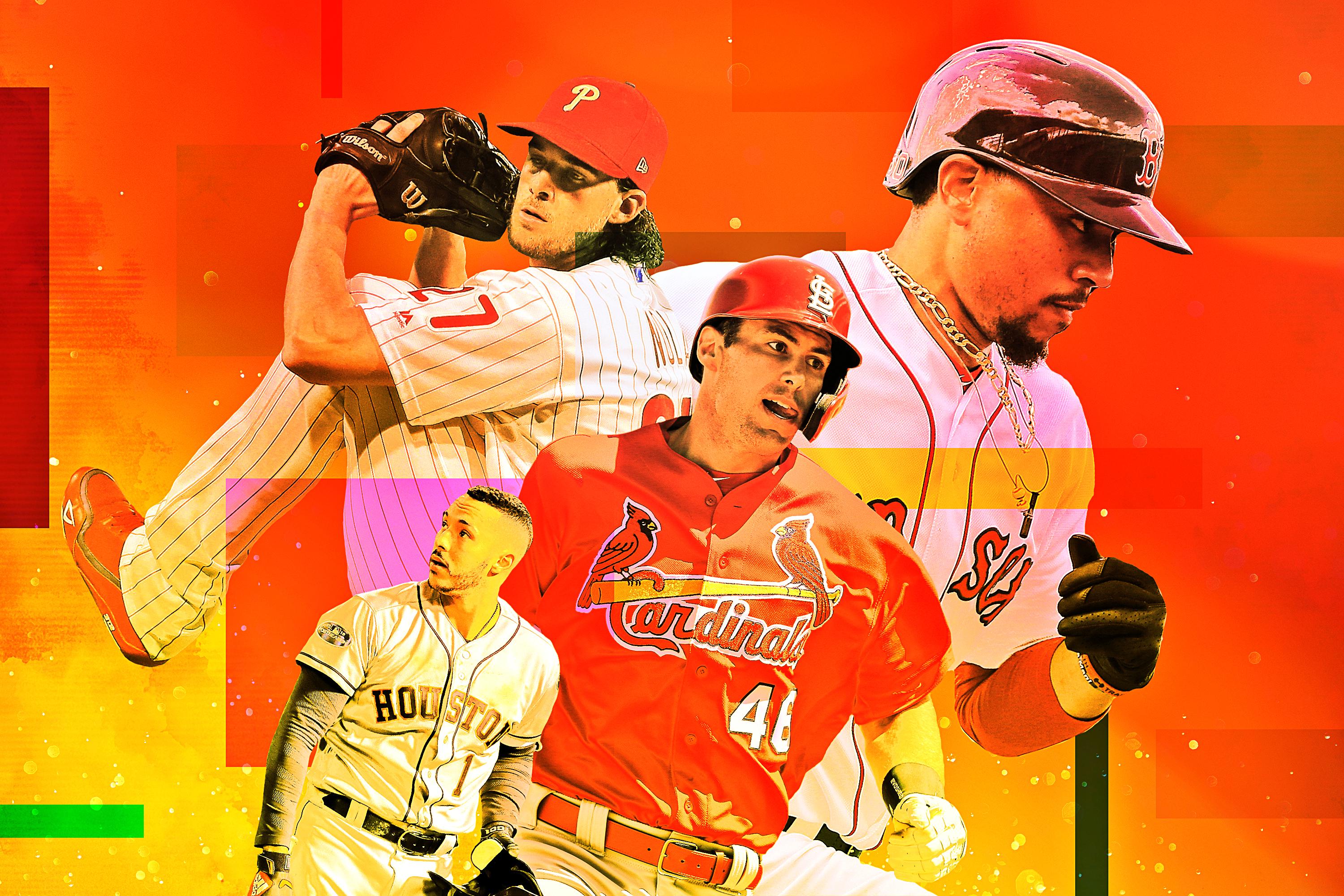
An important part of any fan’s preparation for baseball’s regular season is creating and managing expectations. Not just in the normal euphemistic sense of “preparing oneself for failure” (though certainly baseball involves a lot of failure) but also in the sense of figuring out what each team is capable of accomplishing. An 85-win season and third-place finish would be a disaster for the Red Sox, for instance, but it’d be the best season the Cincinnati Reds have managed in the better part of a decade.
Expectations come from external means, like projections systems being bullish on the Yankees or down on the A’s this year, or through a quick glance at a team’s roster construction, which might reveal that the Padres or Braves could overachieve thanks to their glut of young talent. It’s also possible to guess at a team’s confidence through the moves it made in the offseason—the Phillies, after falling short, filled two shopping carts at the supermarket this winter—or through the rhetoric of its GM, manager, or players. The clues are everywhere. So let’s rank all 30 teams based on how good they ought to be this year.
1. Houston Astros
Houston won 103 games last year and its roster might be even better in 2019. The Astros lost Charlie Morton and (probably) Dallas Keuchel to free agency this offseason, plus Lance McCullers Jr. to Tommy John, but somewhat incredibly have the pitching depth to make up for it. Utilityman Marwin González pulled up stakes and headed to Minnesota, but Aledmys Díaz figures to be a competent replacement.
Houston also covered up its few weaknesses: Catcher Robinson Chirinos (.222/.338/.419 last year) will be an improvement on Brian McCann (.212/.301/.339 in 2018), and if nothing else watching him squat 150 times a game won’t make you wince and hold your knees. The Astros also went out and got Michael Brantley to play left field, where they were quietly pretty bad last year; part of the reason for that was Kyle Tucker, their top offensive prospect, who drew comparisons to Ted Williams in spring training last year but hit .141/.236/.203 in 72 big league plate appearances. Whether he’s coming off the bench, DHing, or displacing Josh Reddick in right field during the season, Tucker should provide more (any) value in 2019, as will Carlos Correa, who played through a back injury in the second half and hit just .180/.261/.256 after the break. Correa posted back-to-back six-win seasons in 2016 and 2017, and with six extra-base hits in 42 preseason plate appearances, he looks far more comfortable than he did six months ago.
2. Boston Red Sox
Boston has a comparable lineup to Houston’s, maybe a bit better, as the Astros, like 27 other teams, don’t have a position player as good as Mookie Betts. And I like the top four of Boston’s rotation a little more than Houston’s. But the difference here—the reason Boston might win only 100 games instead of 104, and start the ALCS on the road—is what that pitching staff looks like after the fourth starter. Boston re-signed World Series hero Nathan Eovaldi but let relievers Craig Kimbrel and Joe Kelly walk as free agents. Unlike the Astros, the Red Sox do not have the pitching prospects to fill those holes internally, let alone plug a hole in the rotation if Eovaldi or Chris Sale gets hurt, which isn’t outside the realm of possibility.
3. New York Yankees
The Yankees, in contrast to Boston, have oodles of pitching depth, but they start the season with holes not just in their pitching staff, but across the roster. Every team has to deal with injuries, but not every team suffers an equal number of injuries. Center fielder Aaron Hicks, who signed a seven-year extension this offseason, will not be ready for Opening Day, nor will pitchers Dellin Betances, Jordan Montgomery, and Luis Severino, or shortstop Didi Gregorius. First baseman Greg Bird is a question mark, but at this point in his career it’d probably just be easier to assume Bird will be on the injured list and be pleasantly surprised when he plays.
The Yankees (foolishly, I’d argue, as would Zach Kram) stayed away from Manny Machado and Bryce Harper this past offseason in favor of gobbling up role players, so they’ll have competent big leaguers to keep the ship afloat. But even a team this deep will struggle without two up-the-middle starters, its setup man, and 40 percent of its rotation.
4. Los Angeles Dodgers
Last year, the Red Sox, Astros, and Yankees stood head and shoulders above the rest of MLB, followed by a cluster of closely matched National League teams, with the Indians, A’s, and one or two other fringe AL contenders mixed in. That should happen again this year, except even more extreme. The top three in this list are in the AL, with the Yankees closer to being the best team in baseball than the fourth-best, but 12 of the next 17 teams are from the National League, and all 12 have a reasonable shot at making the playoffs.
Because the National League is so competitive this year, there’s no true playoff lock, but the closest we’re going to get is the Dodgers, mostly because I’m not sure who’s going to knock them out of first place. Yes, the Dodgers lost Machado and Yasmani Grandal to free agency, and traded Yasiel Puig, Alex Wood, and Matt Kemp, but Corey Seager is returning from Tommy John, and the Dodgers were a lot better than their 92-71 record would suggest last year: They were third in baseball in aggregate wins above average, with the run differential of a 102-win team. Frankly, I wouldn’t mind seeing them get taken down a peg after dumping salary, then going off to sign A.J. Pollock instead of Harper, but they’re still loaded, and their major NL West competitors—the Padres and Rockies—are still a step behind on talent. The end of the Dodgers’ streak of division titles is visible on the horizon, but we’re still a few years off.
5. Milwaukee Brewers
Milwaukee brings back most of last year’s 96-win team, and should benefit from having a full season of Mike Moustakas, as well as the addition of Grandal this offseason. Having the second-best catcher in baseball is a significant addition to a team that literally started Erik Kratz in the playoffs last year.
The big question mark for the Brewers is the pitching staff, which was true last year but in a totally different way. In 2018, the Brewers worked around injuries to the starting rotation by assembling a stupendously good bullpen. This year, starters Jimmy Nelson, Zach Davies, and Chase Anderson are all returning from injuries that kept them out down the stretch last year, and youngsters Brandon Woodruff and Corbin Burnes will move to the rotation full-time; that’s so much starting depth that Anderson, Milwaukee’s 2018 Opening Day starter, will begin the season in the bullpen.
On the other hand, two of Milwaukee’s relief aces from 2018—Corey Knebel and Jeremy Jeffress—are hurt, perhaps significantly in Knebel’s case, and with Burnes and Woodruff moving to the rotation, Milwaukee now has holes to fill in relief, so much so that it’s been sniffing around free-agent closer Craig Kimbrel. Signing Kimbrel would be in character for the Brewers, who under GM David Stearns have made a habit of waiting out the market to grab good veterans at a discount.
6. Washington Nationals
If you think it’s weird that the Nationals could lose Harper and still be one of the best teams in the NL, you’d be right. It’s weird! But it’s also true. Juan Soto, a 19-year-old rookie last year, generated a lot of “not since Mel Ott” stats, and Washington will add a consensus top-10 overall prospect, Víctor Robles, to its everyday outfield, essentially taking Harper’s spot. And rather than pocketing the money it could have spent on Harper, Washington reinvested it: Yan Gomes came over from Cleveland in a salary dump, while Brian Dozier, Trevor Rosenthal, Aníbal Sánchez, and (most importantly) Patrick Corbin all signed as free agents. If the Nationals fail to make the NLCS again this year, it won’t be for a lack of trying.

7. St. Louis Cardinals
This team was not as bad as it seemed last year; after firing Mike Matheny midseason with the team hovering around .500, St. Louis got back up to 88-74 under interim manager Mike Shildt. Since then, they picked up Paul Goldschmidt for peanuts and signed Andrew Miller as a free agent. The Brewers and Cubs sucked up all the headlines in the NL Central last year, but it wouldn’t be surprising in the least to see the Cardinals calmly and quietly trotting away with the division in 2019.
8. Cleveland Indians
After winning the pennant in 2016, then ripping off a 102-win season in 2017 (including 22 in a row at one point), the Indians have been disappointing. Essentially, they realized that the AL Central is such dogshit right now that they could sleepwalk to the division title, and now they’re trying to do precisely that. They let Miller, Brantley, and closer Cody Allen walk, dumped Gomes’s salary, and toyed with doing the same to Corey Kluber and Trevor Bauer.
Trying to contend while slashing payroll is a fine line to walk and leaves Cleveland without the depth of the American League’s other top clubs, as demonstrated by their lineups after injuries to Francisco Lindor (calf) and José Ramírez (knee). Both should be back relatively soon, but Cleveland is just one or two injuries from being dumped out of the playoffs by its own hubris and having, like, the University of Illinois win the AL Central by default.
9. Philadelphia Phillies
The Phillies are definitely serious about contending in 2019; they locked up ace Aaron Nola, traded their top prospect for catcher J.T. Realmuto, picked up All-Star shortstop Jean Segura, and spent several hundred million dollars on a crop of free agents that includes reliever David Robertson, outfielder Andrew McCutchen, and, oh yeah, Bryce Harper.
And yet there’s kind of a last-shot-of–The Graduate feeling to this club heading into 2019: They made the big trades, they signed the big free agent, they busted up the wedding and hopped on the bus, and it’s awesome … but now what? (Alternatively: The Phillies are like Heavy D & the Boyz, because “Now that we found glove, what are we gonna do?”) Even after they made their big play, the Phillies find themselves in a four-way dogfight for the NL East with three other clubs that also made substantial additions this offseason. The lineup is awesome, Nola is awesome, and with Robertson and Seranthony Dominguez at the back end, the bullpen should be good too, but they’ve got substantial, possibly fatal question marks elsewhere on the pitching staff. That’s to say nothing of the clubhouse issues that plagued the team last year, as illustrated by Santana v. Television (2018).
The Phillies could win the World Series this year, or they could just as easily end up drifting back to .500 in a noisy and embarrassing fashion. Anything is possible with this team.
10. Chicago Cubs
The Cubs haven’t really backslid that much since winning the World Series in 2016; it’s more that they’ve stayed the course while their competition improved. Now they’ve still got a killer lineup, but their prospect pipeline has run dry and their pitching staff is old. But the Cubs have been out of big-time prospects since the José Quintana trade in mid-2017, and their rotation has never been as good as it was in 2016. And they’ve won at least 90 games and made the playoffs the past two years anyway. You could make a reasonable case for them being as high as no. 4 on this list.
But that’s not the perception, and what makes me most nervous about the Cubs this year is that they seem to have internalized the idea that they’re in decline, even if that isn’t necessarily true. On Sunday, Patrick Mooney and Sahadev Sharma of The Athletic published an extensive report on the Cubs’ attempts to make their team more engaged in 2019: more mandatory batting practice, encouraging players to eat better, more time on the road for top executives, less time in the agora with beat writers for manager Joe Maddon. Maybe everyone buckles down a little more and the Cubs get back to winning 100 games a year, but this sounds a lot like upper management deciding to micromanage instead of improve the roster through free agency. That’s a tough transition for a team that was incredibly loose when it won 103 games and the World Series in 2016, and it contradicts Maddon’s style, which is notable because he’s in the last year of his contract. Like the Phillies, the Cubs will probably be just fine, but there is a ton of train-wreck potential for a team with this much talent.
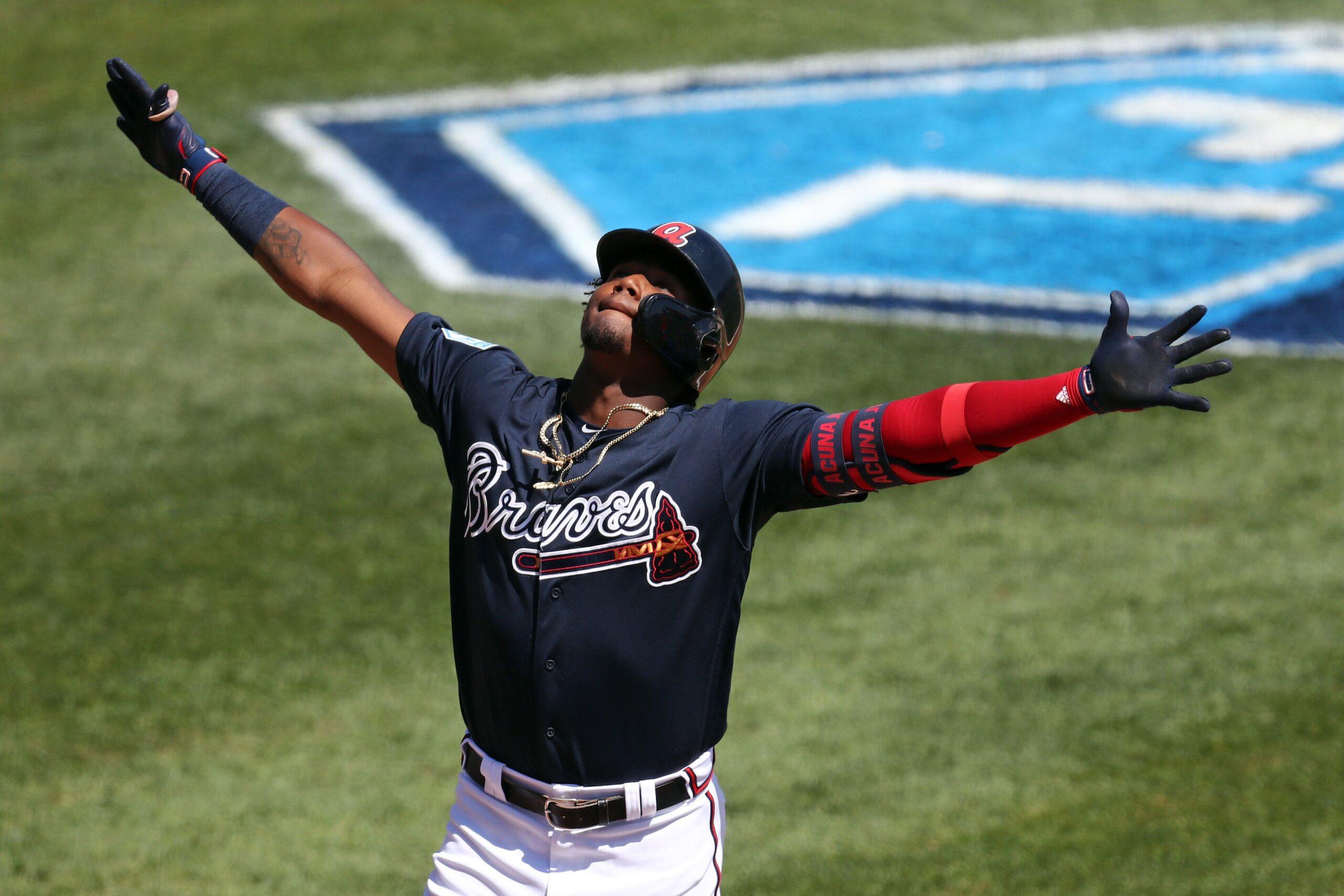
11. Atlanta Braves
This is something of a hedge, because the Braves won the NL East going away last year, and are still in the process of infusing the roster with the horde of talented youngsters they’ve spent the past five years acquiring. It’s possible that Ronald Acuña Jr., last year’s NL Rookie of the Year, discovers God Mode and puts up something like an eight-win season, and one of their young pitchers delivers another Rookie of the Year season. But the pitching staff still has a lot to prove, and the division will be substantially more competitive this year than it was in 2018. I need to see it before I believe it.
12. New York Mets
Nobody loves making fun of the Mets more than I do, but the 2019 version of the team looks really good. Let’s assume that Jacob deGrom is merely one of the best pitchers in baseball and not the best National League pitcher in 50 years, which is what he looked like last year. Let’s also remember that the NL East is one of the most competitive divisions in baseball this year, and at least one of the Mets, Phillies, Nats, or Braves will tumble bloodied out of the grand guignol (or go .500 against the Marlins) and end up wringing only 75 wins out of a roster that could’ve won 90.
But the Mets have great top-end starting pitching, the best closer in the division in Edwin Diaz, and between Michael Conforto, Brandon Nimmo, and (if they let him play) touted prospect Pete Alonso, quite a good offensive core. In addition to those homegrown sluggers, the Mets lineup boasts Wilson Ramos, Robinson Canó, and Jeff McNeil, the 12th-round utilityman who hit like 2009 Ben Zobrist as a 26-year-old rookie last year. There’s a playoff team in here, if they can survive the division, to say nothing of the hex that turned a 11-1 start in 2018 into a 77-85 final record.
13. Los Angeles Angels
In 2014, everyone on the Texas Rangers got hurt: Yu Darvish, Derek Holland, Neftalí Feliz, Alexi Ogando, Prince Fielder, Jurickson Profar. The Rangers lost 95 games. That’s the kind of bad injury luck the Angels had last year, when they started 13-3 and ended up finishing 80-82. In 2015, the Rangers signed Shin-Soo Choo and traded for Cole Hamels and Yovani Gallardo, but more than anything else they just got healthy again and went 88-74 and won the division. Los Angeles hasn’t made any additions on the level of Choo or Hamels, but Trevor Cahill should help the rotation and top prospects like Griffin Canning and Jo Adell (if he recovers from his injuries in time for a callup this year) can help the big league club, which includes such stars as Mike Trout, Andrelton Simmons, Justin Upton, and Shohei Ohtani. Or half of Shohei Ohtani, at any rate.
I wouldn’t pick this team to finish within a mile of the playoffs in the National League, but the AL has five playoff spots and only seven competitive teams, only three of which are truly scary. The Angels are as good a pick as any.
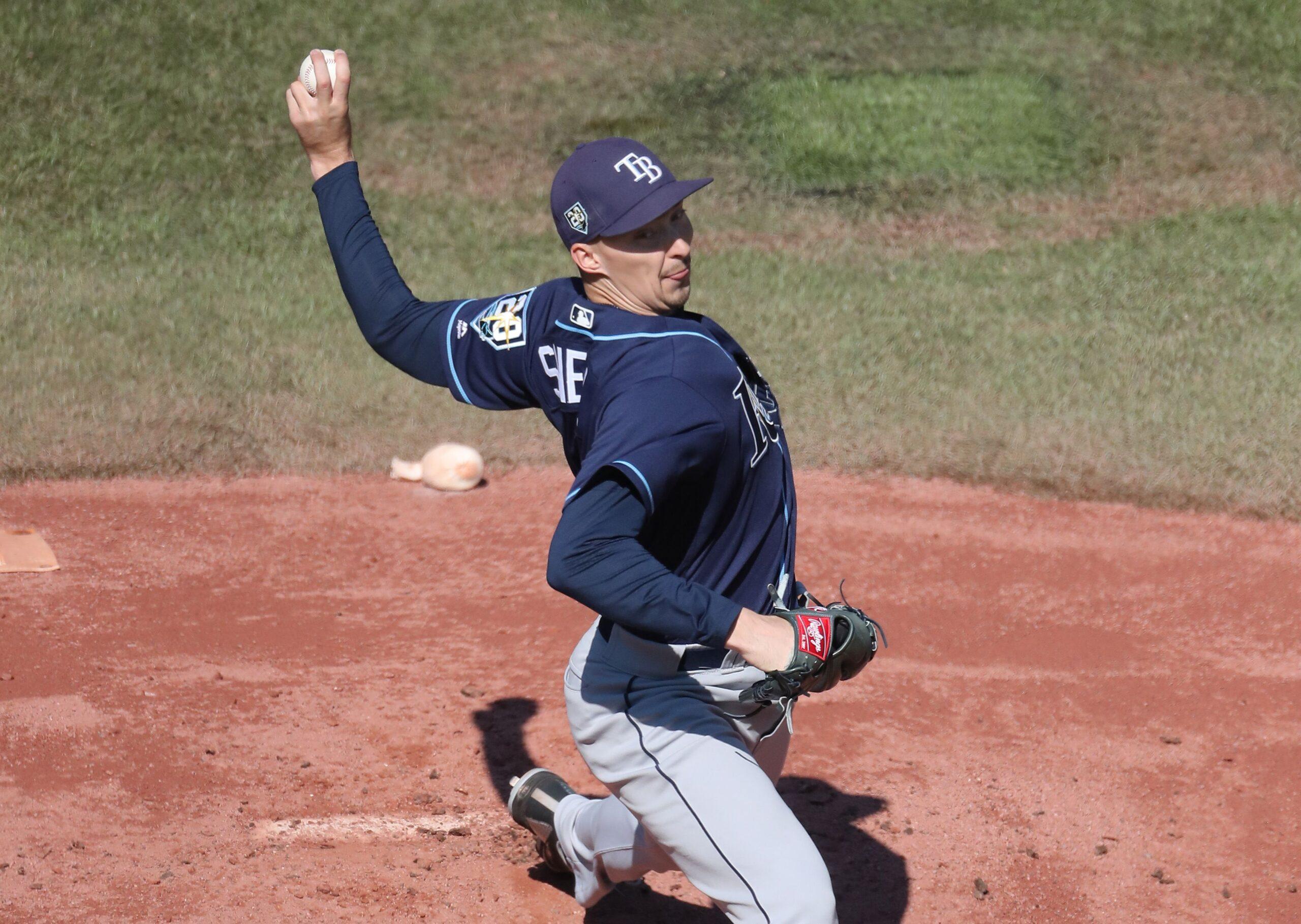
14. Tampa Bay Rays
It could be four truly scary teams, but the Rays, even after signing Charlie Morton and extending Blake Snell, are carrying an Opening Day payroll of just $55.4 million. That’s by far the lowest in baseball. It takes a great deal of creativity and innovation to put out a competitive team on that low payroll, but that approach has a ceiling, and we saw it last year when Tampa Bay won 90 games on a shoestring budget but didn’t come close to putting pressure on the American League’s top teams.
15. San Diego Padres
The Padres are in a similar situation to the Braves, in that they’ve got an incredibly talented team but an unproven pitching staff, only more extreme. Signing Manny Machado signals an intention to contend soon. But three of their best position players (Luis Urias, Fernando Tatis Jr., and Francisco Mejía) are rookies. And while the Braves at least have Mike Foltynewicz and Julio Teheran in their rotation, the two most experienced Padres starters are Eric Lauer and Joey Lucchesi, both of whom were rookies last year and neither of whom has thrown more than 130 MLB innings.
It would absolutely own if this young Padres club, with so many exciting players coming through and with Machado in the Benny the Jet role, made a run at the playoffs this year. I just think they’re a year from making that happen.
16. Oakland Athletics
Is this harsh for a team that won 97 games last year? Maybe. Oakland is definitely in the hunt for the second wild card, along with the Angels and Rays, but Sean Manaea and rookie Jesus Luzardo—probably the team’s two best starting pitchers—will both start the season on the IL, and the A’s are already two games in the hole after going winless in Japan on Ichiro’s retirement tour. That doesn’t sound like a big deal, but the A’s needed a lot of things to go right in order to accomplish what they did last season, and even small bumps in the road could keep them on the wrong side of the bubble in 2019.
17. Colorado Rockies
There’s a lot to like about this year’s Rockies: Locking in Nolan Arenado has to be good for morale, and they have several other young position players laying a claim to a spot in the lineup: Ryan McMahon, David Dahl, and later in this season, top prospect Brendan Rodgers. Their rotation, headlined by German Márquez and Kyle Freeland, might be the best—certainly the deepest—in franchise history.
But this team is just flat-out bad in a few places. Their best catching option is Chris Iannetta, who turns 36 in two weeks, and his backup, Tony Wolters, hit .170/.292/.286 last year while playing half his games in Coors Field. And while you could spell “throwing good money after bad” without “Ian Desmond as the everyday center fielder,” I’m not sure why you’d want to. Arenado and (I can’t believe I’m saying this about the Rockies, but it’s true) their pitching staff ought to keep Colorado in the race, but the Rockies have a lower ceiling than most of the National League’s other playoff contenders.
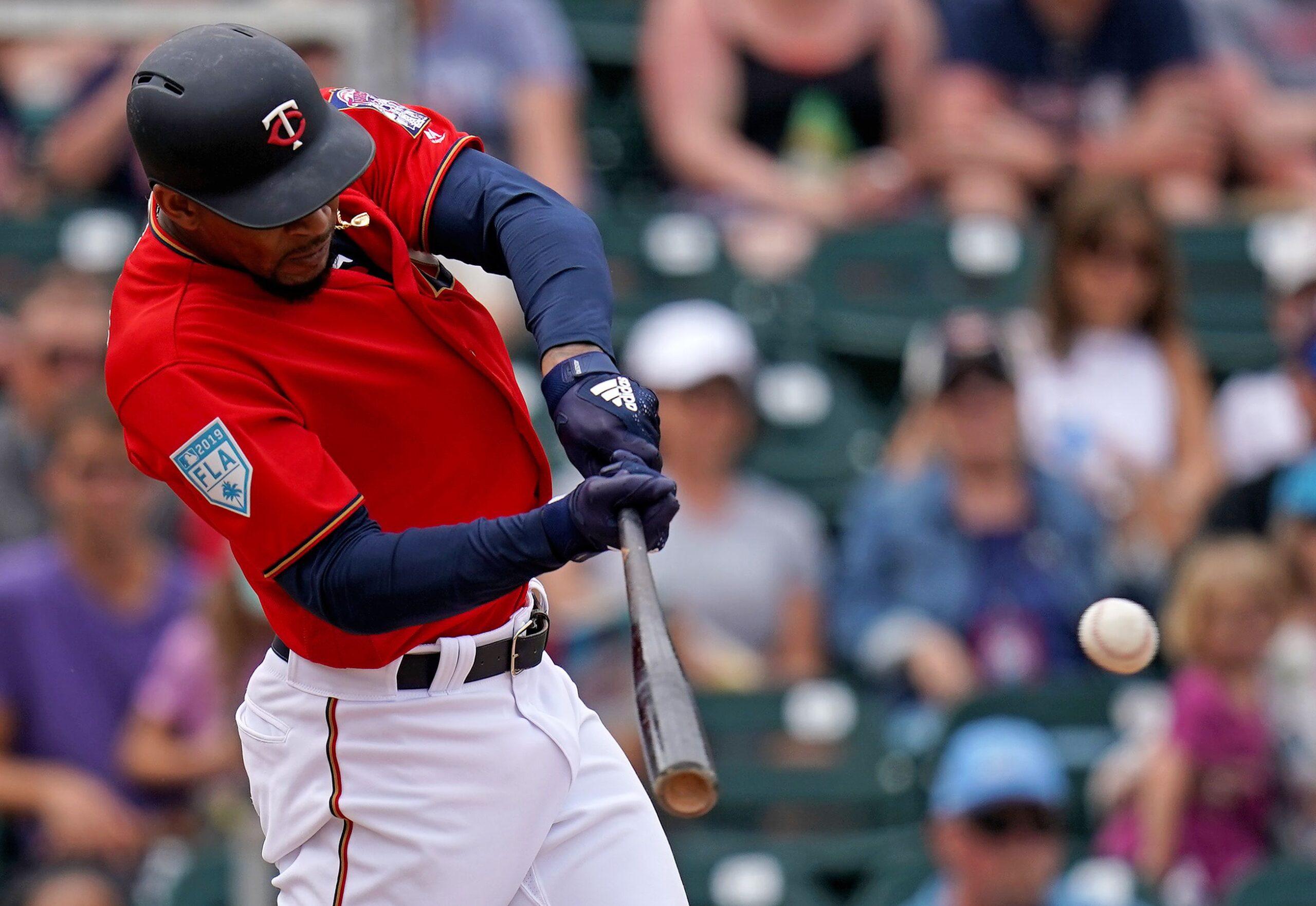
18. Minnesota Twins
Jonathan Schoop, Marwin González, and Nelson Cruz were all savvy free-agent signings, but the Twins are still waiting on Byron Buxton and Miguel Sanó to fulfill the potential they showed as prospects. After both showed flashes of brilliance in 2017 (Sanó hit 28 home runs and made the All-Star team, Buxton put up 5.1 bWAR and got MVP votes), both were below-replacement-level players in 2018. If they get back on track, we can talk about the Twins putting pressure on Cleveland in the AL Central, but if they don’t, we probably won’t talk about the Twins much at all.
19. Cincinnati Reds
I really like what the Reds did this offseason—using payroll flexibility to gobble up a solid supporting cast for Joey Votto and Eugenio Suárez. The Reds will be interesting and perhaps even fun, thanks to the addition of Puig and some up-and-coming players like pitcher Luis Castillo and top offensive prospect Nick Senzel. Cincinnati is still something of a long shot to make the playoffs; FanGraphs gives the Reds a 7.5 percent chance of winning the NL Central and a 16 percent chance of making the playoffs, while Vegas has them at 12-to-1 to win the division. But Cincinnati, rather than punting the season, made a few low-cost tweaks to maneuver into a position where it can take advantage if the Cubs, Cardinals, or Brewers implode.
20. Pittsburgh Pirates
The Pirates represent the very outer fringe of playoff contender range. Like the Rays, this is an extremely cheap, moderately good team that could be moderately cheap but extremely good if management and ownership were willing to invest in at least the pretense of winning. The Pirates have the game’s second-lowest payroll, $62.8 million, i.e. $7 million less than what the NHL’s Ottawa Senators (the Pittsburgh Pirates of a league that makes half as much money as MLB) spent on payroll this season. And for that money, they have a couple of impressive big-name pitchers (Jameson Taillon and Chris Archer), a good closer (Felipe Vázquez), and a good outfield (Corey Dickerson, Starling Marté, Gregory Polanco). But they’re also going to fill out about half their active roster with minimum-salary players this year, and it shows.
21. Arizona Diamondbacks
Arizona’s going to have a good rotation again this year, headlined by Zack Greinke and Robbie Ray. Former Arizona State standout Merrill Kelly returns to the U.S. after four eventful years in South Korea, and pitching prospects Jon Duplantier, Taylor Widener, and Taylor Clarke are all set to make their big league debuts in 2019.
The lineup? Well, it would look a lot better if Paul Goldschmidt were still in it. If the two young buy-low candidates Arizona received in exchange for Goldschmidt, catcher Carson Kelly and pitcher Luke Weaver, perform well in 2019, losing Goldschmidt will sting a little less acutely, but only a little.
22. Toronto Blue Jays
It’s possible that the next good Blue Jays team will have an infield of Vladimir Guerrero Jr. at third base, Bo Bichette (son of Dante) at shortstop, and Cavan Biggio (son of Craig) at second. It’s tough to find work in this economy, but I’m pretty sure if you called Blue Jays GM Ross Atkins and told him your father was Jeromy Burnitz, you could finagle your way into Toronto’s bullpen for a month or two, or at least until someone discovered the ruse.
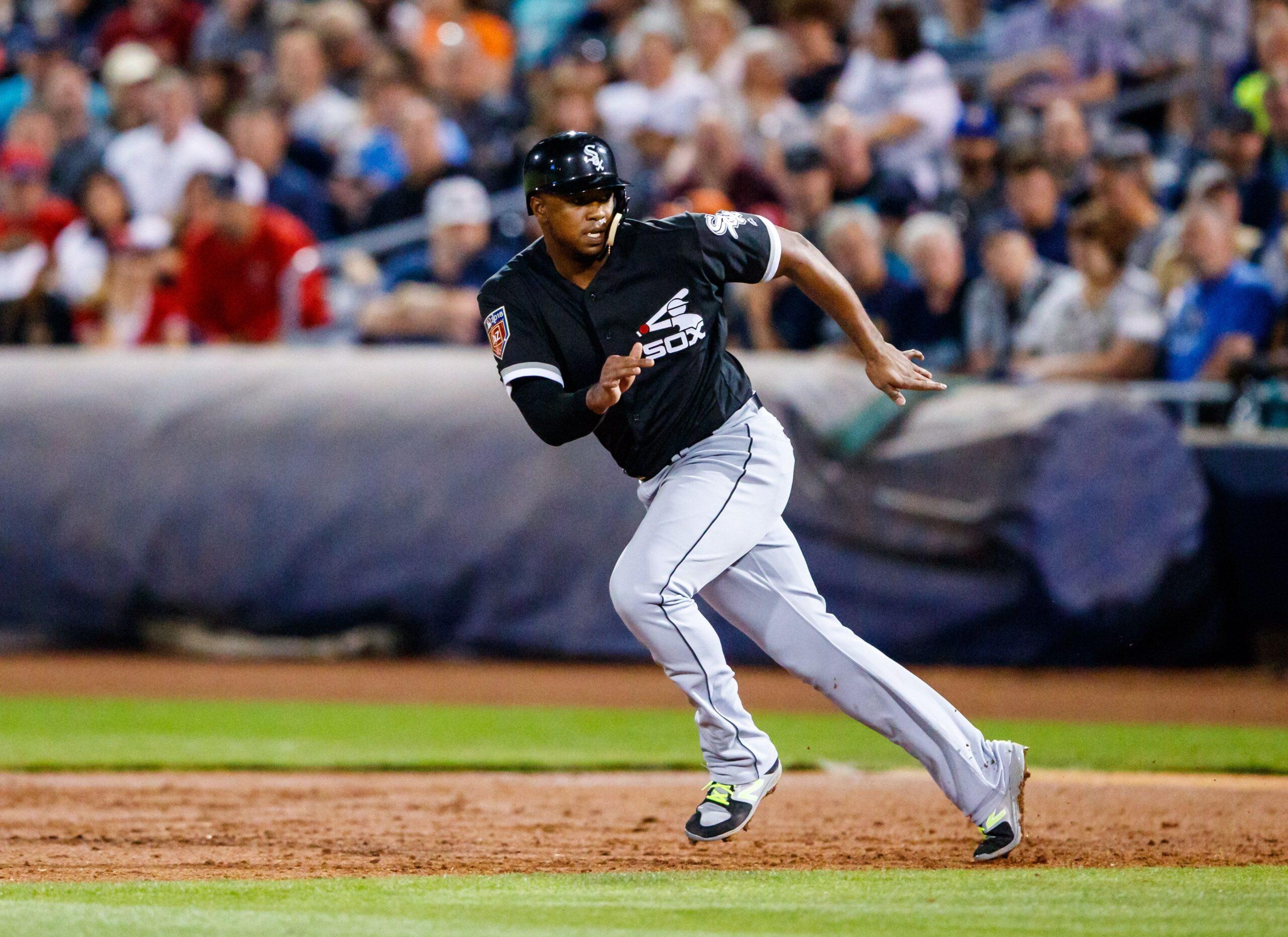
23. Chicago White Sox
Before the 2017 season I suggested that the White Sox were an attractive World Series bet at 300-to-1 odds, thanks to the bumper crop of prospects they brought in who were right on the verge of becoming big league contributors. That take turned out to be so wrong I will probably regret bringing it back to public attention, but all those once-exciting young players are still here, and still young! Eloy Jimenez is coming up! Yoán Moncada is still only 23! Maybe it’ll all end up working out and the White Sox didn’t just blow up a core of cost-controlled stars like Chris Sale and Adam Eaton for nothing!
24. San Francisco Giants
The Giants are still dismantling the roster that won three World Series from 2010 to 2014 and made the playoffs in 2016. It’s a long and arduous process made slightly (but not substantially) more interesting due to the fact former Dodgers GM Farhan Zaidi is now overseeing the rebuild. This will be manager Bruce Bochy’s last season, and Madison Bumgarner, trying for his first season without a freak injury since 2016, will be a free agent at season’s end, if he’s not traded before then. The Giants won’t be very good, and this season will be bittersweet at best for fans, but it happens sometimes to teams that go on runs like the Even-Year Giants did. Sooner or later the good times have to come to an end.
25. Kansas City Royals
The Royals are definitely going to be awful, but at least they’re going to be awful in an interesting way. Second baseman Whit Merrifield has led the American League in stolen bases in each of the past two seasons, his only two full seasons in the majors. Shortstop Adalberto Mondesi (son of Raul; how he slipped through the Blue Jays’ fingers I’ll never know) stole 32 bases in 75 games last year, and Kansas City’s new center fielder is Billy Hamilton, who’s stolen more bases in the past five seasons than anyone else in baseball. Stolen bases are awesome, and we don’t get enough of them anymore, so here’s to the Royals for choosing not to be boring.
26. Seattle Mariners
The Mariners got rid of most of their big-name players this offseason: Segura, Cruz, Díaz, and Canó are all gone. Kyle Seager is out for the first two months of the year with a wrist injury, and even Ichiro’s return from semi-retirement is over. Félix Hernández is still around, but I’m not sure it’s much fun to watch him put up an ERA in the mid-5.00s anymore. That essentially leaves Mitch Haniger, Edwin Encarnación, and a bunch of more or less anonymous dudes.
If Seattle is interesting this year, it will be because some of those dudes, many of whom struggled for playing time with previous teams, reward the Mariners for giving them a chance to play regularly: Shortstop J.P. Crawford and outfielder Domingo Santana, acquired in trades for Segura and Ben Gamel, respectively, are two examples. Haniger shone in a similar situation two years ago; maybe the Mariners will find another late bloomer in 2019.
27. Texas Rangers
The Rangers rotation of Drew Smyly, Lance Lynn, Shelby Miller, Edinson Vólquez, and Mike Minor would’ve been awesome in, like, 2013 or 2014. I think the Rangers should really steer into this aesthetic and do a season’s worth of throwback nights to earlier this decade. Do a Parks and Recreation giveaway, stage a postgame concert series with Lorde and Macklemore, have Edward Snowden throw the first pitch via remote from Russia. It’d be a gold mine.
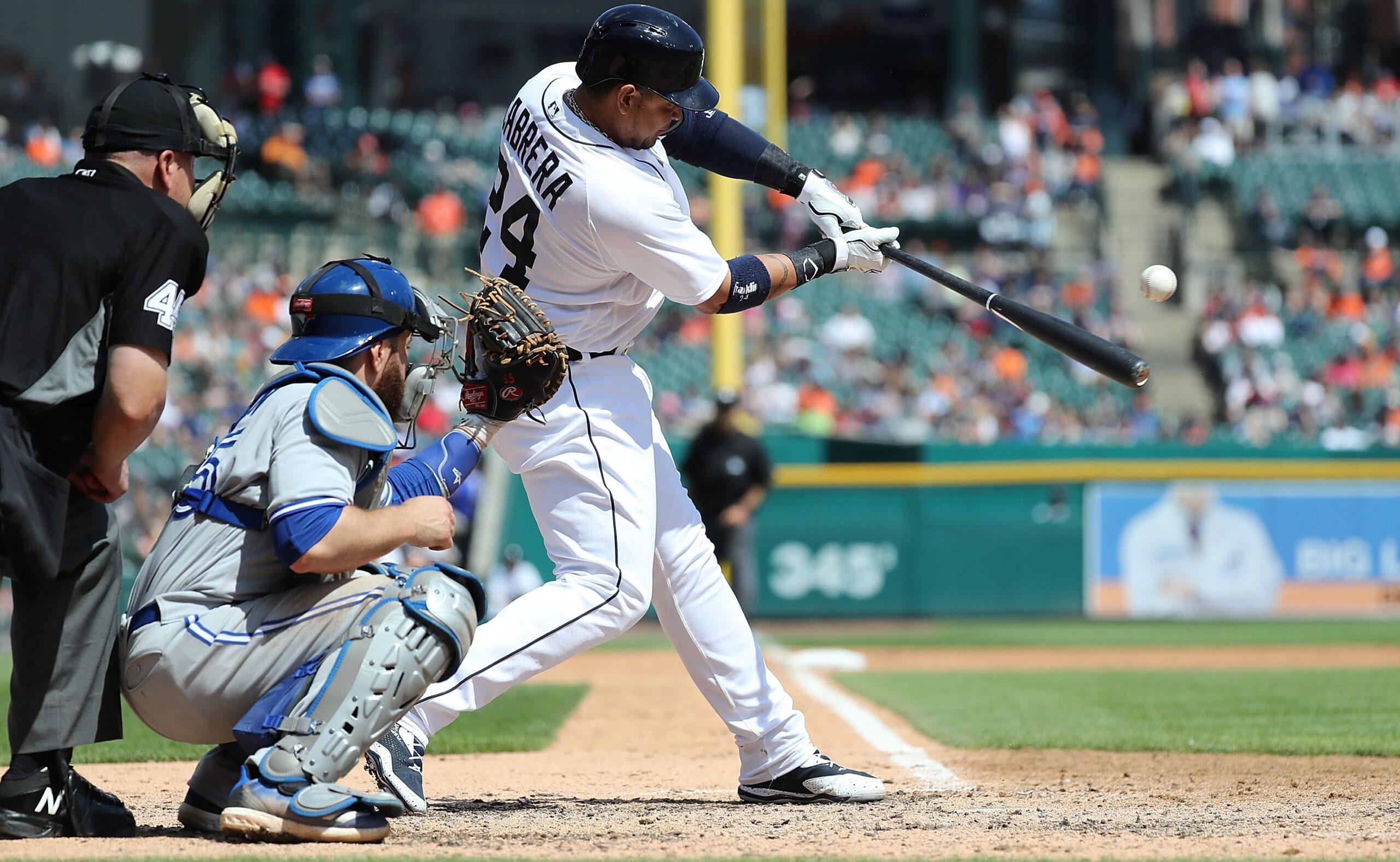
28. Detroit Tigers
Miguel Cabrera tore his biceps last year and played only 38 games. He’s now almost 36 years old, and the Tigers aren’t going to be relevant again anytime soon. Cabrera is signed through 2023, with vesting options for the following two years that probably won’t get picked up, and I’d bet against the Tigers mattering on the national stage again by then.
I bring this up because it feels like we’re headed to a point where Cabrera, a two-time MVP with four batting titles, two home run titles, and a World Series ring—an obvious Hall of Famer—is going to announce his retirement in four or five years and it’ll come as a shock to most of the American public that he was still playing.
29. Miami Marlins
I’ve given it a lot of thought, and I don’t like Miami’s new uniforms. The worst uniforms in baseball are both ugly and boring, and the Marlins have somehow managed to pull off that trick in Miami of all places. The black-on-black caps and alternate jerseys look downright funereal, and the home whites feel like they’re meant to be called “classy.” Crisp and clean works if you’re the Yankees or Dodgers and you’ve won a billion World Series since your last major uniform redesign, which predates color TV. But on a last-place team that’s named after a fish, that’s on its third rebrand in the past decade? It’s just sad. Don’t take yourself seriously when nobody else does.
30. Baltimore Orioles
The Orioles, on the other hand, have outstanding uniforms. [Scans over depth chart at Baseball Prospectus, sees that Trey Mancini is set to lead Baltimore’s position players in WARP.] And … yeah, let’s leave it there. Whatever the Orioles do, they’ll look great doing it.
